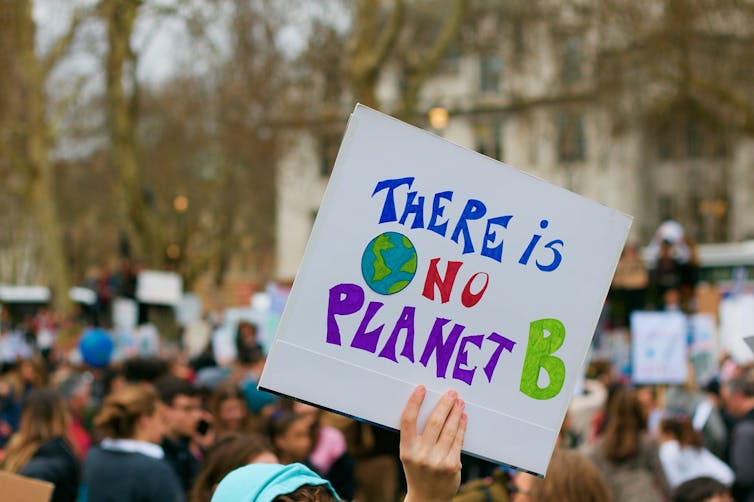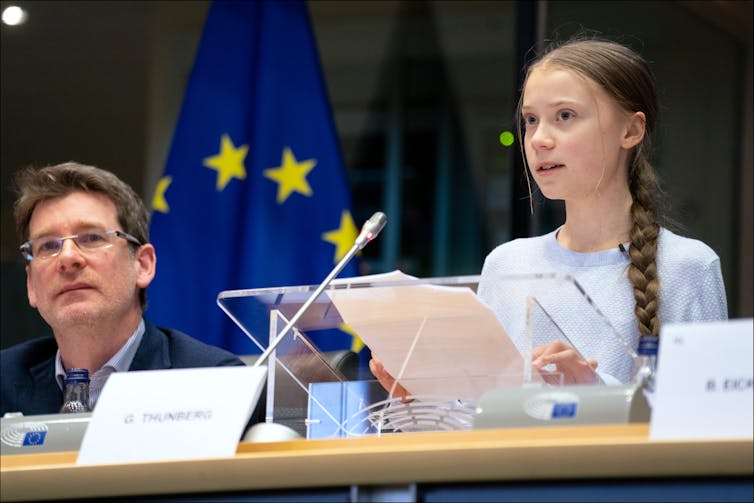Social media gives everyone the opportunity to argue with the world. So if you want to persuade people about the need to tackle climate change and how we should do it, social media is a pretty good place to start. Many people clearly think so: environmentally conscious Instagram hashtags like #zerowaste boast 4 million posts and counting.
But how do you get your posts about climate change to cut through the noise – and inspire positive climate-related behaviour change and support for policies that mitigate the climate crisis? Here are some key insights from recent research on communicating about climate change.

1. Relevance matters
As individuals, our power to fight climate change is limited but vital. The more we understand climate change as threatening our own beloved habitats, the more we are likely to accept far-reaching social and political decisions that will protect the planet in the long run.
2. Conciseness helps
The sheer abundance of internet chatter can quickly become overwhelming. Whether positive or negative, we know that the short snippets of information provided by Twitter or Instagram – no matter our belief in our own immunity to them – shape the way we think about key social ideas and, in turn, the way we react. Since people don’t often have the time or attention to wade through long arguments, it’s best to keep your contributions brief and to the point.
3. Chase positive, realistic targets
Research demonstrates that if we feel that preventing climate threats is beyond our power, we may just give up and do nothing. Climate anxiety is real, and it can be paralysing. That means positive messages are much better than negative ones at making people act. Giving your audience tips on how to recycle, for example, beats listing all the problems with recycling.

4. Avoid misleading terminology
Climate change is complicated. And communication about climate change is often less clear, less streamlined and more prone to being miscommunicated than discussions about more immediate threats like a pandemic.
This means you need to choose your words carefully and precisely. While a “positive trend” sounds nice, it can be bad news when it concerns temperature. Referring to an “upward trend” might be wiser.
5. Climate is global: weather is local
People, particularly in the UK, love to talk about the weather. Erroneously, it’s frequently linked directly to the overall climate, especially if a speaker wants to express climate scepticism. With Britain seeing snow in April, Niagara Falls frozen over this year and weather predictions always unreliable, why should anyone believe in the certainty of climate change or in the urgency of fighting against it?
Talking about the weather in the context of climate change is often misleading, since it’s not reflective of the broader climate picture. But in places where climate change affects the weather directly, articulating global change in terms that respect local concerns like flooding or drought can be more effective.
6. Avoid uncertainty
The scientific evidence for climate change is undeniable, but the details of how it will unfold are less clear. Yet when climate scientists talk about “uncertainties” regarding the planet’s future, they’re less likely to be taken seriously by the public. Framing the same outcomes as “risks” is far more effective.
But describing the probability of future scenarios convincingly and clearly is a challenge which requires clear language. Take Greta Thunberg, whose transparent, direct communications about climate change have sparked a worldwide climate movement supported by social media. Snippets like “How dare you?”, “Never too small to make a difference,” or “Our political leaders have failed us,” lodge in people’s minds, leaving little room for misunderstanding.

7. Suggest concrete action
Research shows that demonstrating actual, specific risks that are tangible and close to home – like the threat to birds or bees in our gardens – helps fight climate denial by presenting evidence people can witness for themselves.
Likewise, advice for making simple, practical changes, like growing flowers that help bees flourish or carrying reusable shopping bags, is more likely to have a direct practical effect than sharing theoretical and complex scientific discourse.
8. Listen
Maybe the most important requirement of all is to listen. We must make the effort to understand our audience’s stumbling blocks to accepting the reality of the climate crisis. After all, people whose concerns have been truly heard are much more open to questioning their behaviour – which is what it takes to achieve global change.
The author would like to acknowledge Jenna Burns (Bangor University intern) for the important contributions made to the compilation of this article.

